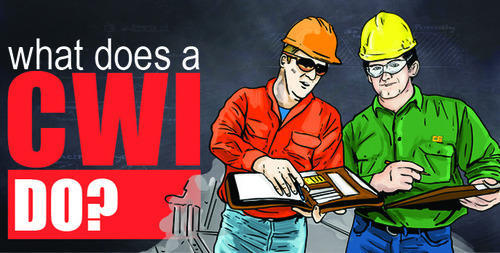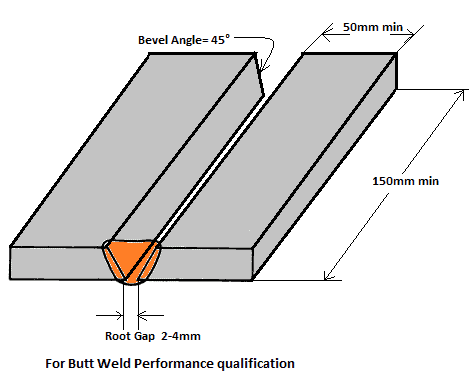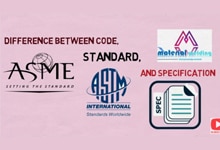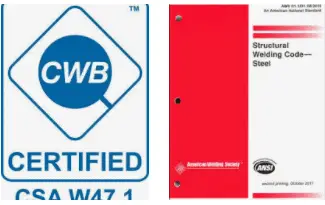How to tab D1.1 code book organization
When studying for the AWS D1.1 Certified Welding Inspector (CWI) open book examination, it is essential to have a well-organized and easy-to-navigate D1.1 code book.
This important document outlines the requirements for structural welding and is a key reference during the examination.
One way to improve the efficiency of using the D1.1 code book is to tab its different sections and important information.
In this blog, we will discuss the benefits of tabbing the D1.1 code book and provide tips on how to effectively organize it for quick and easy reference during the exam.
By following these simple tips, you can feel more confident and prepared for the AWS-CWI open book examination.
Practice Full Part-A Mock Examination with actual AWS-CWI exam difficulty level.
Why to tab D1.1 Code?
The D1.1 code book, which is published by the American Welding Society, outlines the requirements for structural welding.
In order to navigate the D1.1 code book effectively, it is important to understand its organizational structure.
When preparing for the AWS D1.1 Certified Welding Inspector (CWI) open book examination, it can be extremely beneficial to tab the D1.1 code book.
It is allowed to take your tabbed Code book in the AWS D1.1 Open code book exam for AWS-CWI Certification.
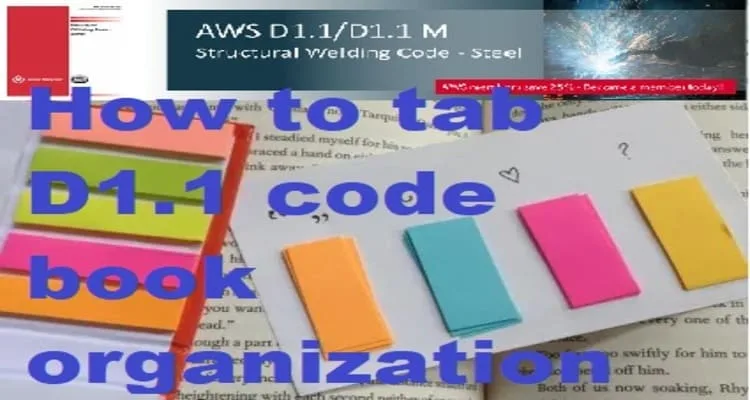
Here are some reasons why:
- Efficient navigation: The D1.1 code book is a large document with multiple sections and subsections. By tabbing the important sections, you can easily navigate the code book and quickly find the information you need. This saves time and makes the exam process more efficient.
- Faster referencing: During the exam, you will be required to answer questions and provide specific references to the code book. With tabs, you can quickly flip to the appropriate section and provide the required reference. This helps to minimize errors and reduce the time required to find the correct information.
- Reduced stress: The open book examination can be a stressful experience. With tabs in your code book, you can feel more confident in your ability to find the information you need, which can help to reduce your stress levels and improve your overall performance.
- Improved accuracy: By tabbing the important sections and information in the code book, you can reduce the risk of missing key details during the exam. This can help to ensure that your answers are accurate and that you are able to demonstrate your knowledge effectively.
How to effectively tab the D1.1 code book?
Here are some tips on how to effectively tab the D1.1 code book for ease of use:
Use sticky tabs
Purchase a set of sticky tabs with different colors and use them to mark the different sections of the code book.
For example, use one color to mark the general requirements section, another color for the structural steel section, and so on. Following are the right and effective stationaries for tabbing the AWS D1.1 Code book:
Mark important sections
In addition to marking the different sections of the code book, use sticky tabs to mark important pages or sections that you refer to frequently.
This could include tables, figures, or specific paragraphs that you need to reference on a regular basis.
Use highlighting
Highlight important text, such as requirements or notes, to make them stand out on the page. This will make it easier to find the information you need when you’re working on a project.
Create a legend
To keep track of the different colors and types of tabs you’re using, create a legend on the inside cover of the code book.
This will help you remember which color tab corresponds to which section of the code book.
Keep it organized
Once you’ve tabbed the code book, make sure to keep it organized by storing it in a protective cover or binder.
This will help prevent the tabs from falling off or getting damaged, and ensure that the code book remains in good condition for future use.
By tabbing the D1.1 code book in a way that works for you, you can streamline your workflow and improve your efficiency when working on welding projects.
With a well-organized code book, you’ll be able to find the information you need quickly and easily, allowing you to focus on the task at hand.
Structure of AWS D1.1 Codebook
The AWS D1.1 Codebook, also known as the Structural Welding Code – Steel, is a comprehensive document that provides guidelines and requirements for welding structural steel.
The codebook is organized into various sections and subsections, which are listed below:
1. General Requirements
This section includes the scope of the codebook, definitions, and general requirements related to welding. It also covers the code limitations and users responsibilities.
2. Normative References
covers references made in the code that links to other related & relevant codes.
3. Terms and Definitions
This glossary is organized into three distinct categories for easy reference.
The first category comprises general welding terms, which have been compiled by the AWS Committee on Definitions and Symbols.
The second category is specific to ultrasonic testing (UT) and includes terms defined by the AWS Structural Welding Committee.
Finally, the third category includes other terms that are relevant to this code and are marked with an asterisk.
4. Design of Welded Connections
Contained within this clause are the requirements pertaining to the design of welded connections that involve either tubular or non-tubular product form members.
This section provides guidelines for designing welded connections, including types of welds, dimensions, and strength requirements.
By adhering to the specifications outlined within this clause, the welded connections can be designed to ensure optimal performance and safety.
5. Prequalification of Welding Procedures (WPSs)
Within this clause, you will find the necessary requirements for exempting a Welding Procedure Specification (WPS) from the WPS qualification criteria outlined in this code.
By following the specifications outlined in this clause, it may be possible to bypass certain WPS qualification requirements and still meet the standards of the code.
This section outlines the prequalification process for welding procedures, including testing and documentation requirements.
6. Qualification
Contained within this clause are the stipulations governing the qualification of Welding Procedure Specifications (WPS) and the necessary performance qualification tests that all welding personnel, including welders, welding operators, and tack welders, must successfully pass in order to perform welding that conforms to the standards of this code.
By adhering to the requirements outlined in this clause, welding personnel can ensure that their welding meets the code’s strict performance standards.
In summary, this section provides guidelines for qualifying welding procedures and welders.
7. Fabrication
Within this clause, you will find a comprehensive set of general fabrication and erection requirements that pertain to welded steel structures governed by this code.
These requirements cover a range of topics, including the standards for base metals, welding consumables, welding techniques, welded details, material preparation and assembly, workmanship, weld repair, and other pertinent criteria.
This section includes requirements for fabrication processes such as cutting, fit-up, and assembly.
9. Inspection
Contained within this clause are the essential criteria that pertain to the qualifications and duties of inspectors, the acceptance criteria for production welds, as well as the standard procedures for conducting visual inspections (VT) and nondestructive testing (NDT).
By adhering to the requirements specified in this clause, inspectors can ensure that the production welds conform to the necessary acceptance criteria and that the welding and fabrication process is carried out to the highest possible standard.
This section provides guidelines for visual inspection and non-destructive testing of welds.
10. Stud Welding
This section provides requirements for stud welding. Within this clause, you will find the stipulations that govern the welding of studs to structural steel as per AWS D1.1.
11. Tubular Structures
Contained within this clause are the specific requirements that pertain exclusively to tubulars. Furthermore, it should be noted that all of the requirements contained in the other clauses of the code also apply to tubulars, unless otherwise specified.
This section provides requirements for welding tubular structures, including joints, dimensions, and strength requirements.
12. Strengthening and Repair of Existing Structures
Contained within this clause is fundamental information that is relevant to the modification or repair of existing steel structures through welding.
In addition to outlining the requirements for a comprehensive work plan, which includes design, workmanship, inspection, and documentation, this clause also describes the use of fatigue life enhancement methods.
14. Annexures: Normative Information
These annexes provide essential information and specific requirements that are an integral part of the standard. The annexes include:
- Annex A: Effective Throats of Fillet Welds in Skewed T-Joints
- Annex B: Guideline on Alternative Methods for Determining Preheat
- Annex D: Temperature-Moisture Content Charts
- Annex E: Flatness of Girder Webs-Statically Loaded Structures
- Annex F: Flatness of Girder Webs-Cyclically Loaded Structures
- Annex G: Qualification and Calibration of UT Units with Other Approved Reference Blocks
- Annex H: Phased Array Ultrasonic Testing (PAUT)
- Annex I: Symbols for Tubular Connection Weld Design.
15. Annexures: Informative Information
The annexes included in this document are intended for informational purposes only and are not considered a formal part of the standard.
These annexes, which range from Annex J to T, provide various resources such as sample welding forms, formats for WPS, and properties of welding wires.
The AWS D1.1 Codebook is a valuable resource for anyone involved in welding structural steel. By understanding the organizational structure of the codebook, welders, inspectors, and engineers can quickly and easily find the information they need to ensure safe and effective welds.
